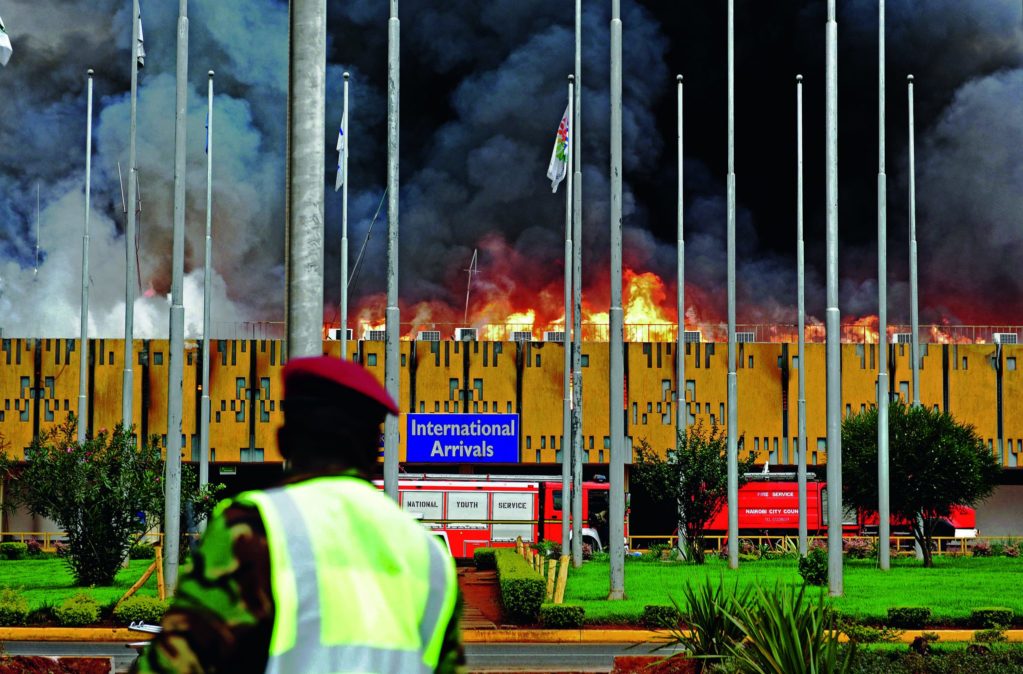Arrivals and departures in Nairobi these days look more like a wedding venue than an airport. Huge white tents make up for the charred remnants of the arrivals hall.
Children sleep on chairs in the morning chill, as passengers crowd under canvas. This is Jomo Kenyatta International Airport (JKIA), in the wake of the crippling fire on August 7.
For five hours, flames tore through the fourth busiest airport in sub-Saharan Africa. It disrupted trade and travel plans for tens of thousands of people as Kenya heads for its tourism peak season.
The annual wildebeest migration alone draws thousands to the Maasai Mara in July and August.

“We are going to put up a temporary terminal that will take about 2.5 million passengers at the same time. We will also fast-track terminal four, which was meant to be opened sometime in March next year. We need to think how we can bring it forward,” says the airport’s manager, Edward Kobuthi.
The fire was another blow to Kenya Airways. It has struggled through turbulent times after reporting a $7 billion loss in 2012. The fire forced the airline to cut international flights by 25%.
“Roughly in terms of revenue, not bottom line, we have lost about $4 million against our plan,” says Titus Naikuni, CEO of Kenya Airways.
“What has happened is that we have changed a number of things. We have moved our international flights to the domestic [terminal], which means all our departures are through domestic. That is very congested.”
“A simple fire gone bad,” says President Uhuru Kenyatta, who criticized the authorities for failing to modernize the airport and for their handling of disasters.
The International Civil Aviation Organisation (ICAO) stipulates that fire fighters should be at the scene of a blaze in three minutes. It took Kenyan fire fighters at least 40 minutes after the fire broke out at around 5AM.
The fire is also likely to slow the expansion of the airport, which has dragged for months following leadership and financial wrangles in the Kenya Airports Authority (KAA). The project—expected to break ground this year—may be delayed, hurt the economy and frustrate Kenya Airways.’
“Kenya Airways’ expansion plan is entirely correlated to the successful and speedy expansion of JKIA. The airport experience has been suboptimal for a while and I am sure Kenya Airways is hoping that the fire is the catalyst for a more aggressive KAA,” says Aly-Khan Satchu, an independent analyst.
KAA plans to expand the airport, which is a regional link to Europe, the Middle East and Asia, in order to handle traffic of 17 million passengers per year by 2020 from the current 6.5 million. In the wake of the fire, it has its work cut out.
